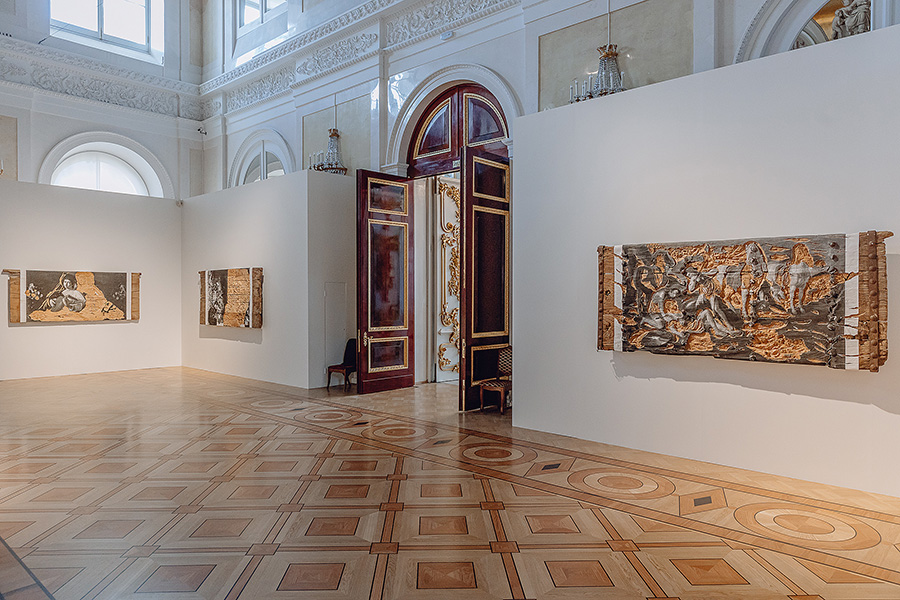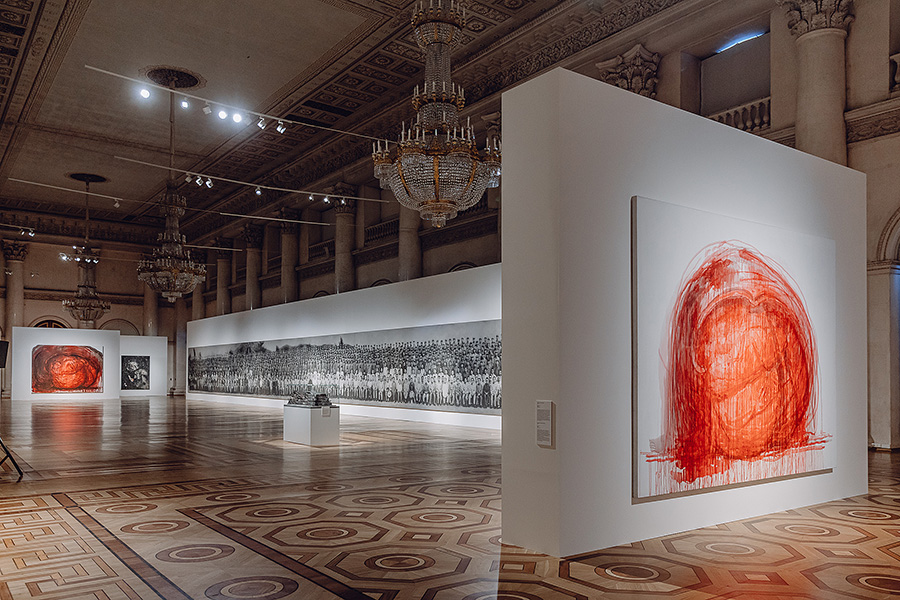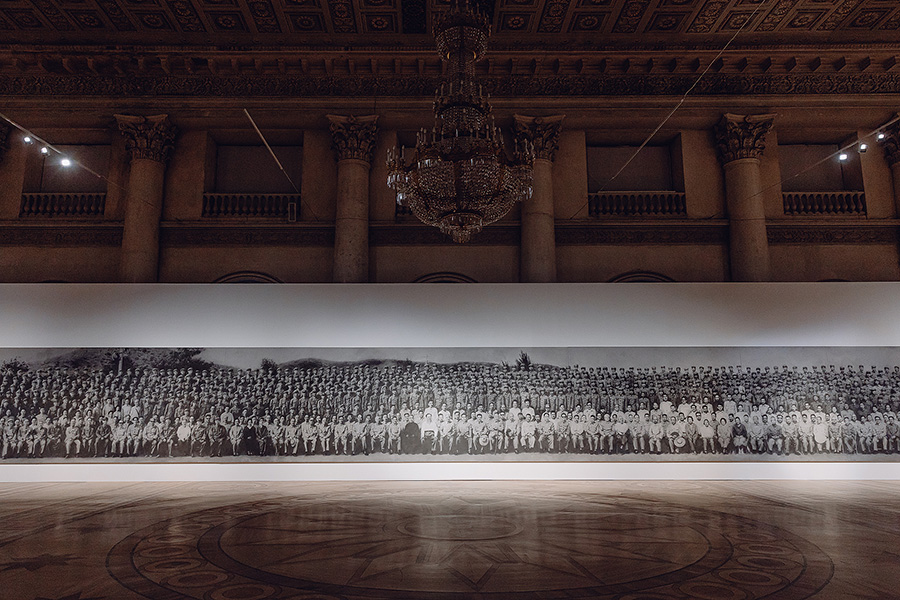The State Hermitage is delighted to present the exhibition Zhang Huan: In the Ashes of History, the first solo exhibition in Russia by the famous contemporary Chinese artist Zhang Huan. Originally, due to open on 15 May 2020, the exhibition been rescheduled to a later date, as result of the pandemic.
In the Ashes of History, which on a display in the Nicholas Hall, the biggest Hall of the Winter Palace, presents several series of works made in a variety of techniques. It contains more than 30 works of art, many of them painted by artist and features his impressions received from his initial visit to St Petersburg, Russia. An additional part of the project are two works from Love – a new series created in response to the events of the pandemic.
Zhang Huan is a contemporary Chinese artist who first came to prominence with a series of controversial performances in China and the USA. In the mid-2000s the artist began to focus on paintings made in a unique way – most of his large-scale works made with incense ash from Buddhist temples. One of these is a forty-metre group portrait of the communist party of the People’s Republic of China that will fill almost the entire length of the Nicholas Hall. The exhibition will also include other works of unusual technique: a combination of photographs and wood carving. Several of the wood bas-reliefs based on motifs from paintings in the Hermitage collection. The final group of works in the forthcoming exhibition is the recent Red series that signifies a change in Zhang Huan’s creative path – back to the technique of painting. The first works in the series come under the title Reincarnation (eight specially selected paintings. The two works called Love will also be on display in the Nicholas Hall; they made during the lockdown period as a distillation of the artist’s personal experience of the situation in China and the world, and a way of preserving the memory of those who have died in the pandemic.
Zhang Huan graduated from the Henan Academy of Fine Arts in Kaifeng (1988). In these early years, he greatly influenced by the paintings of Rembrandt van Rijn and Jean-François Millet. Five years later, in 1993, Zhang Huan graduated with an MA from the Central Academy of Fine Arts in Beijing and around this time started creating performance works, which tested his physical and mental endurance. He continued to produce paintings, too, also mastered the art of photography and sculpture. His time spent living and working in America, from 1998 to 2005, was hugely influential for him. As an artist, Zhang Huan well known throughout the world. He lives and works in Shanghai and New York, combining western artistic techniques in his work with concepts traditionally associated with Chinese culture.
The artist often touches on questions of religion, family, politics, culture, poverty and famine. Zhang Huan seeks to give renewed resonance to modernist techniques of abstraction and minimalism, encompassing them within the parameters of Buddhism and Chinese culture, which allows him to retain his identity as a Chinese artist. He often uses a large range of materials and tools in the creation of his work and this maybe explains the sense of synthesis, even decorativeness that we can found in his art.
Zhang Huan
Zhang Huan was born in 1965 in the Chinese city of Anyang in Henan province. He came to prominence with a series of controversial performances in China and the USA. He creates paintings in a unique way: most of his large-scale works made with incense ash from Buddhist temples. The artist often touches on questions of religion, family, politics, culture, poverty and famine. Zhang Huan seeks to give renewed resonance to modernist techniques of abstraction and minimalism, encompassing them within the parameters of Buddhism and Chinese culture, which allows him to retain his identity as a Chinese artist. The artist’s work are in major collections around the world – the Museum of Modern Art, the Guggenheim Museum and the Metropolitan Museum in New York, the Centre Pompidou and Louis Vuitton Foundation in Paris, the Philadelphia and San Diego Museums of Art, and the Harvard Art Museums. Recent works been exhibited in art galleries and museums in Italy, Australia, America, Austria, Germany, Switzerland, UK and many other countries. Zhang Huan lives and works in Shanghai and New York.





